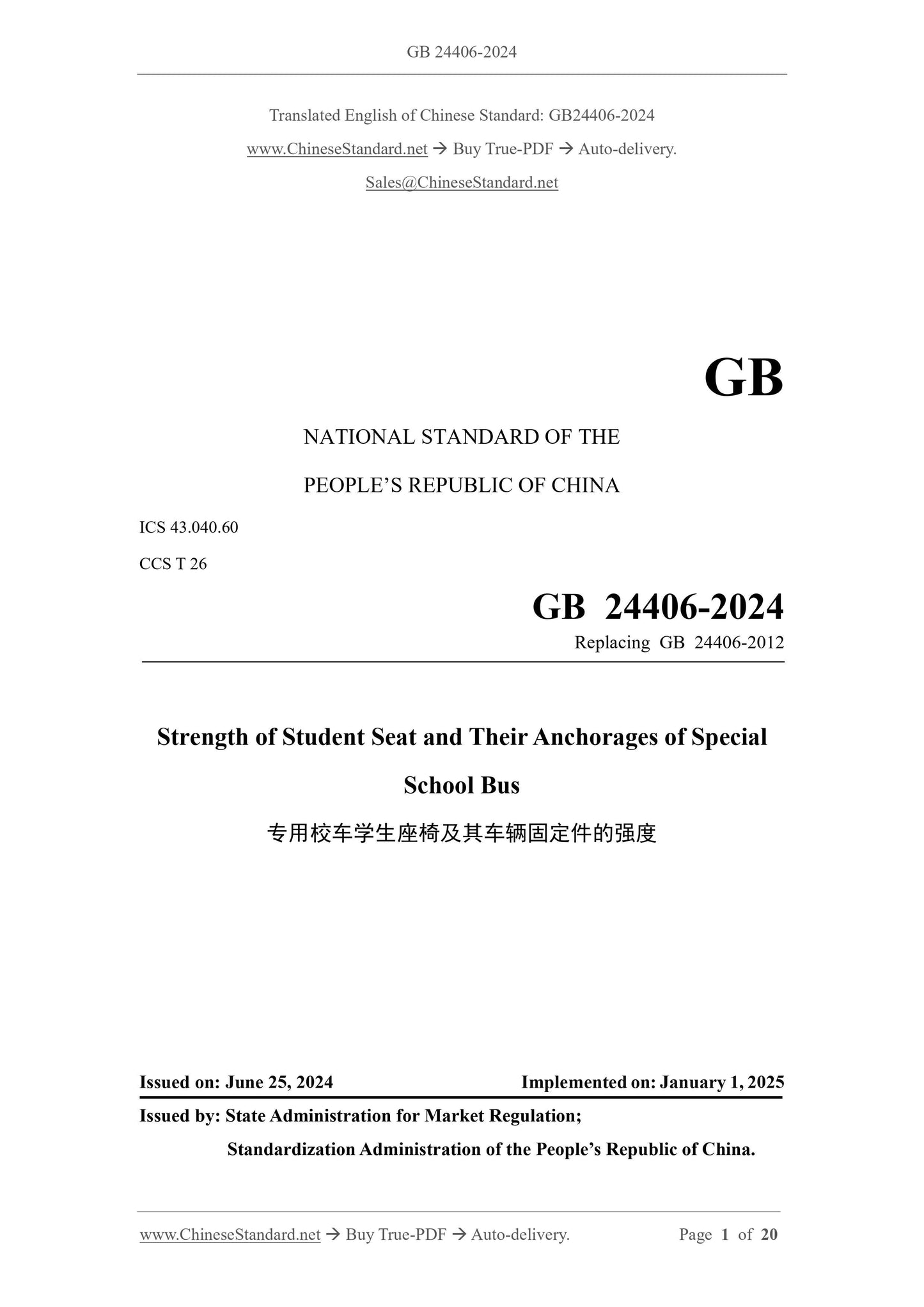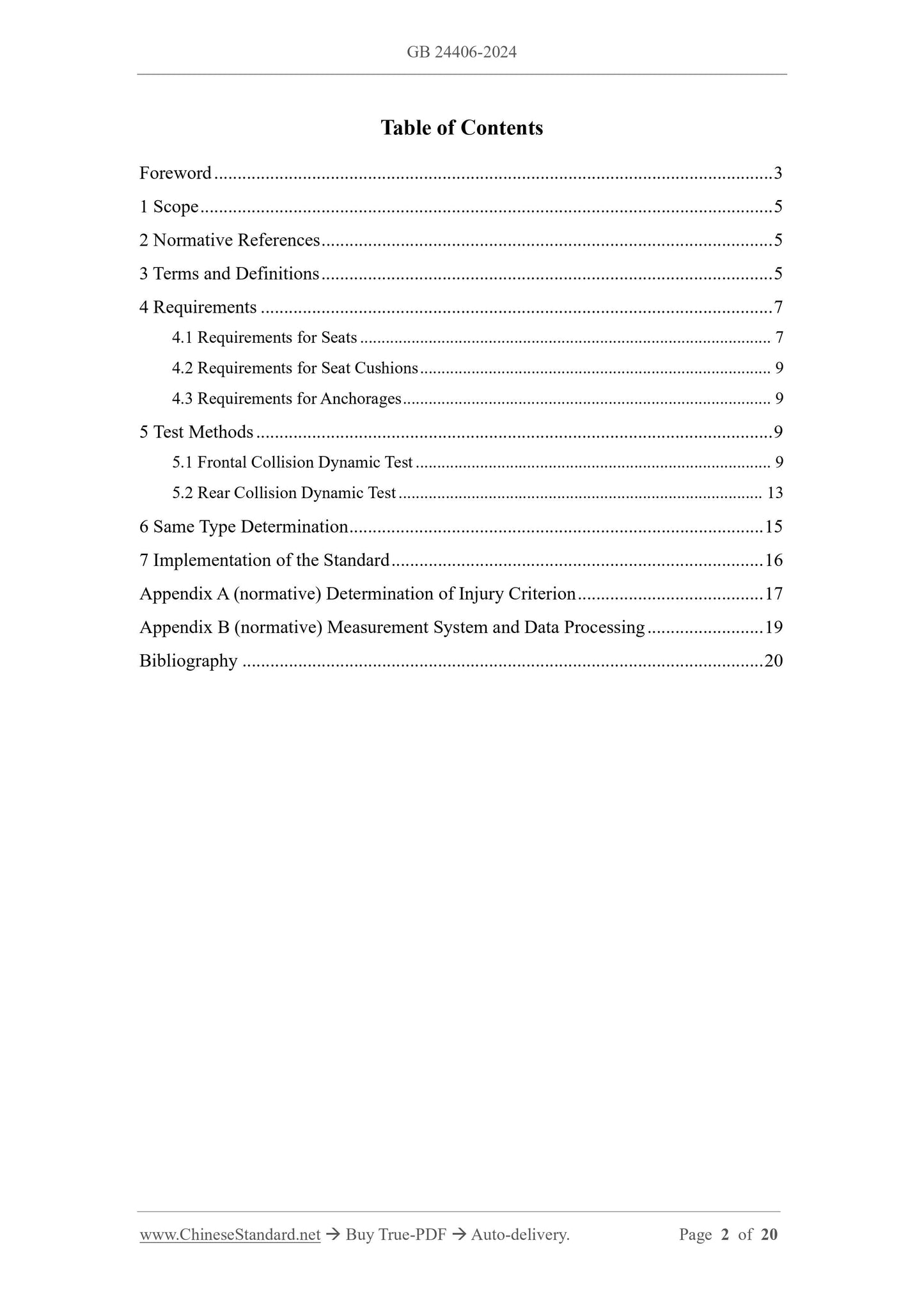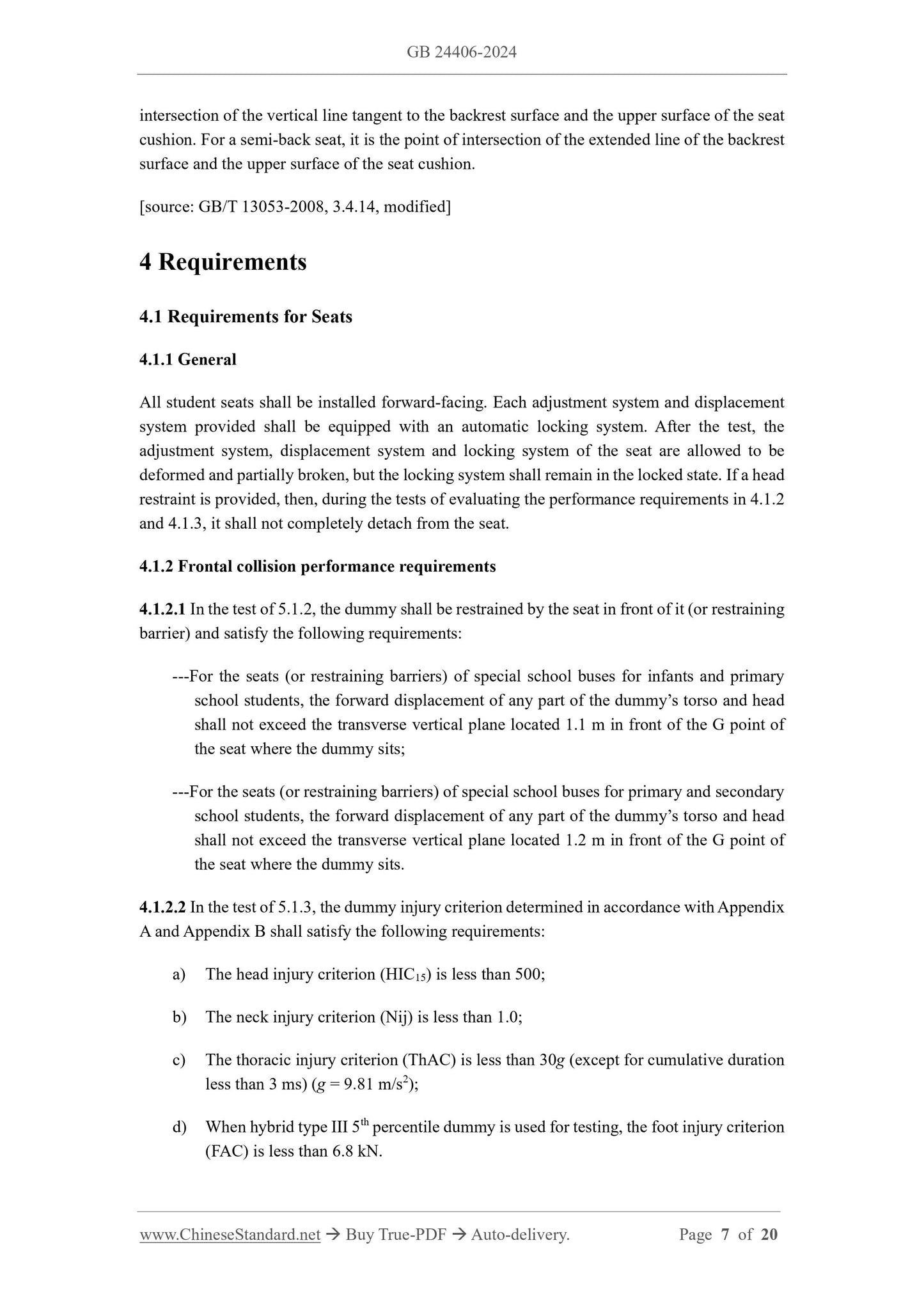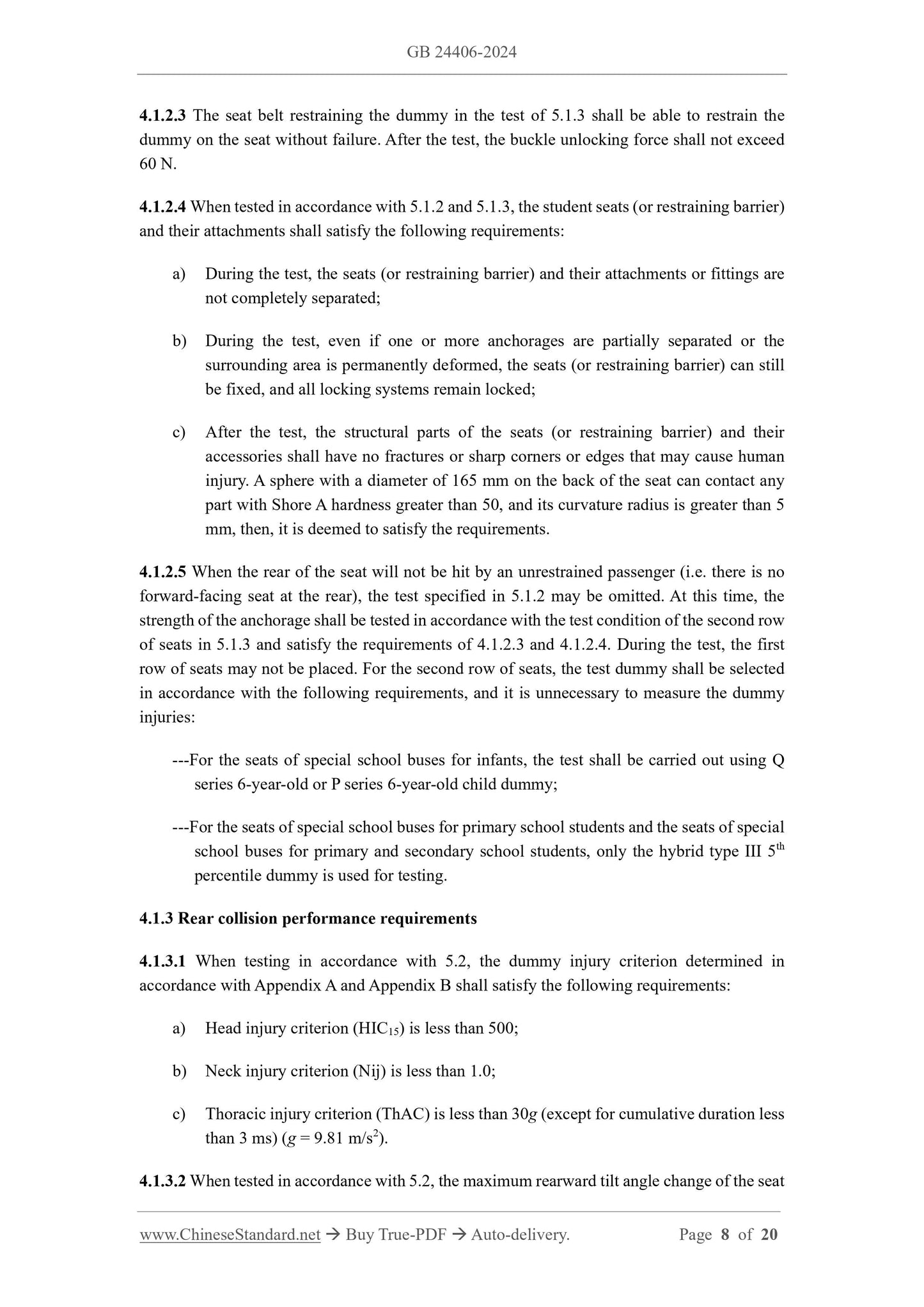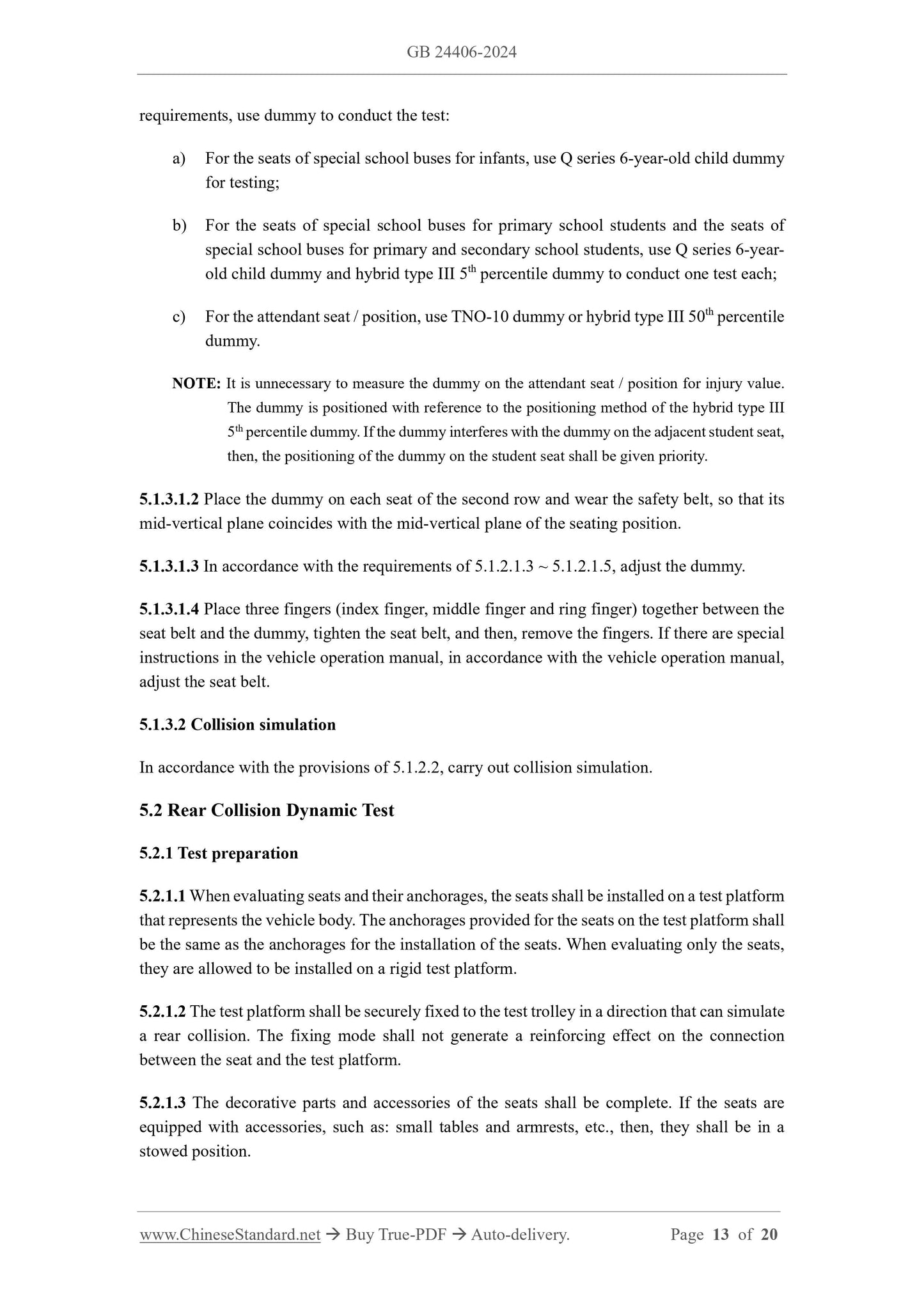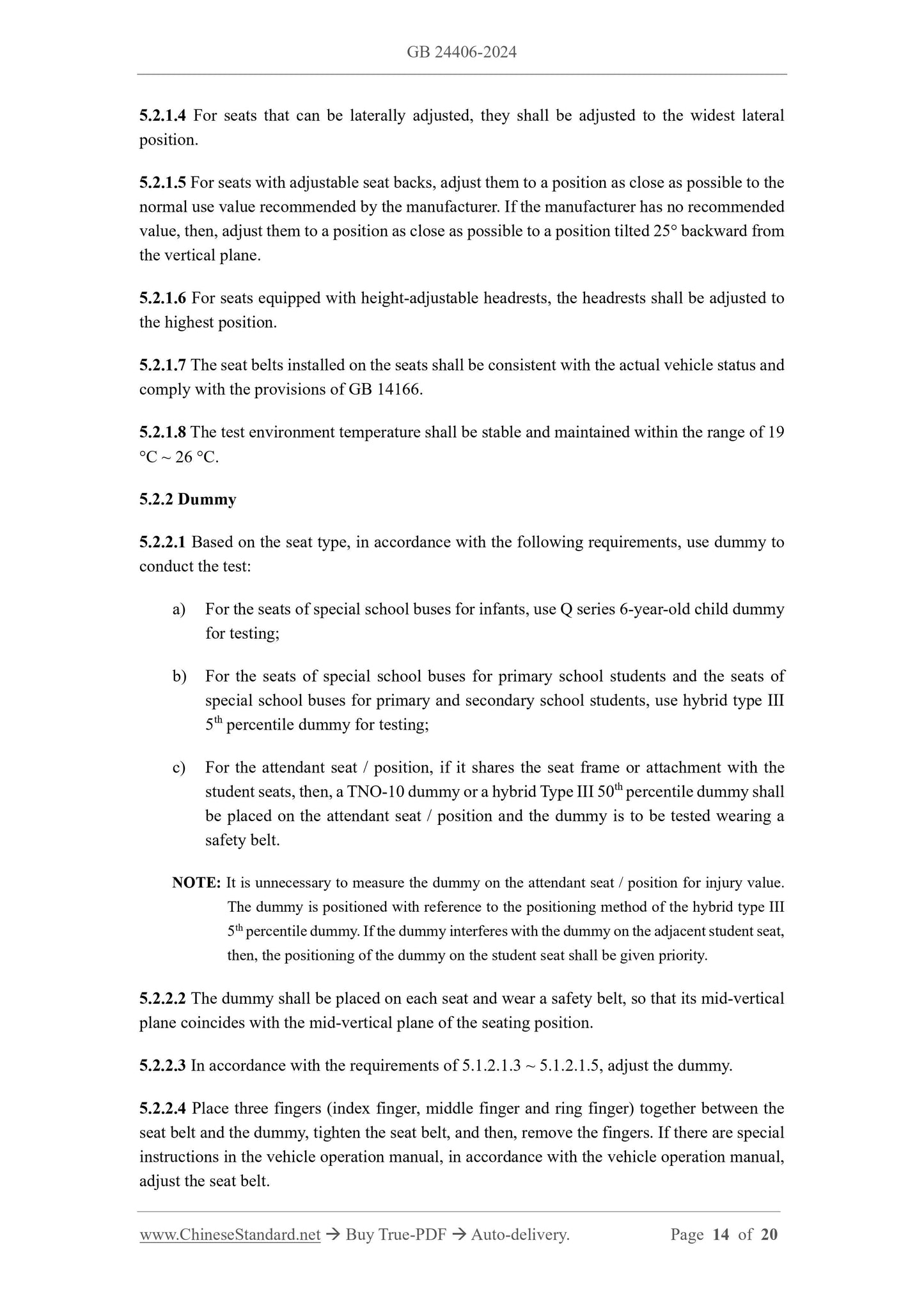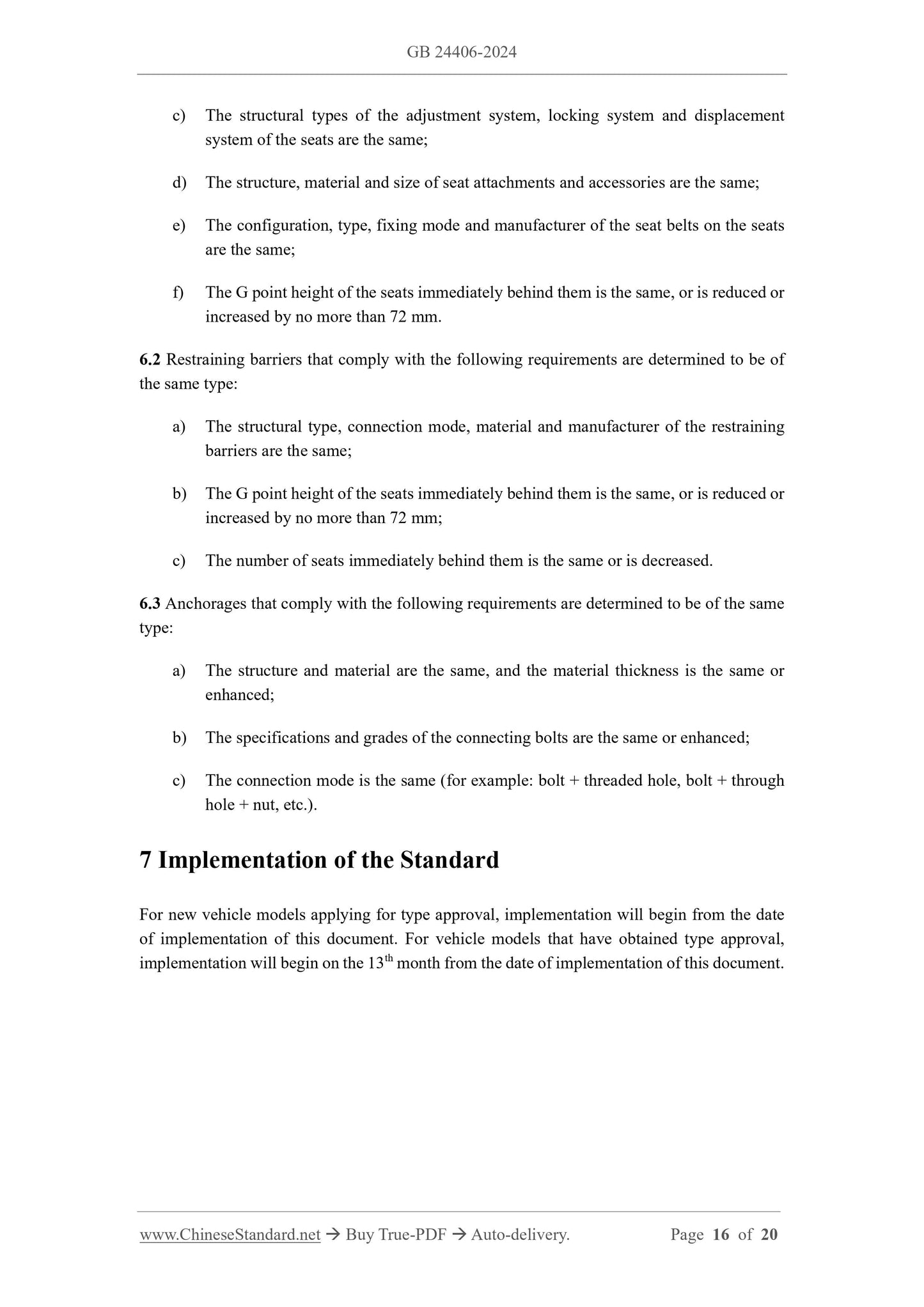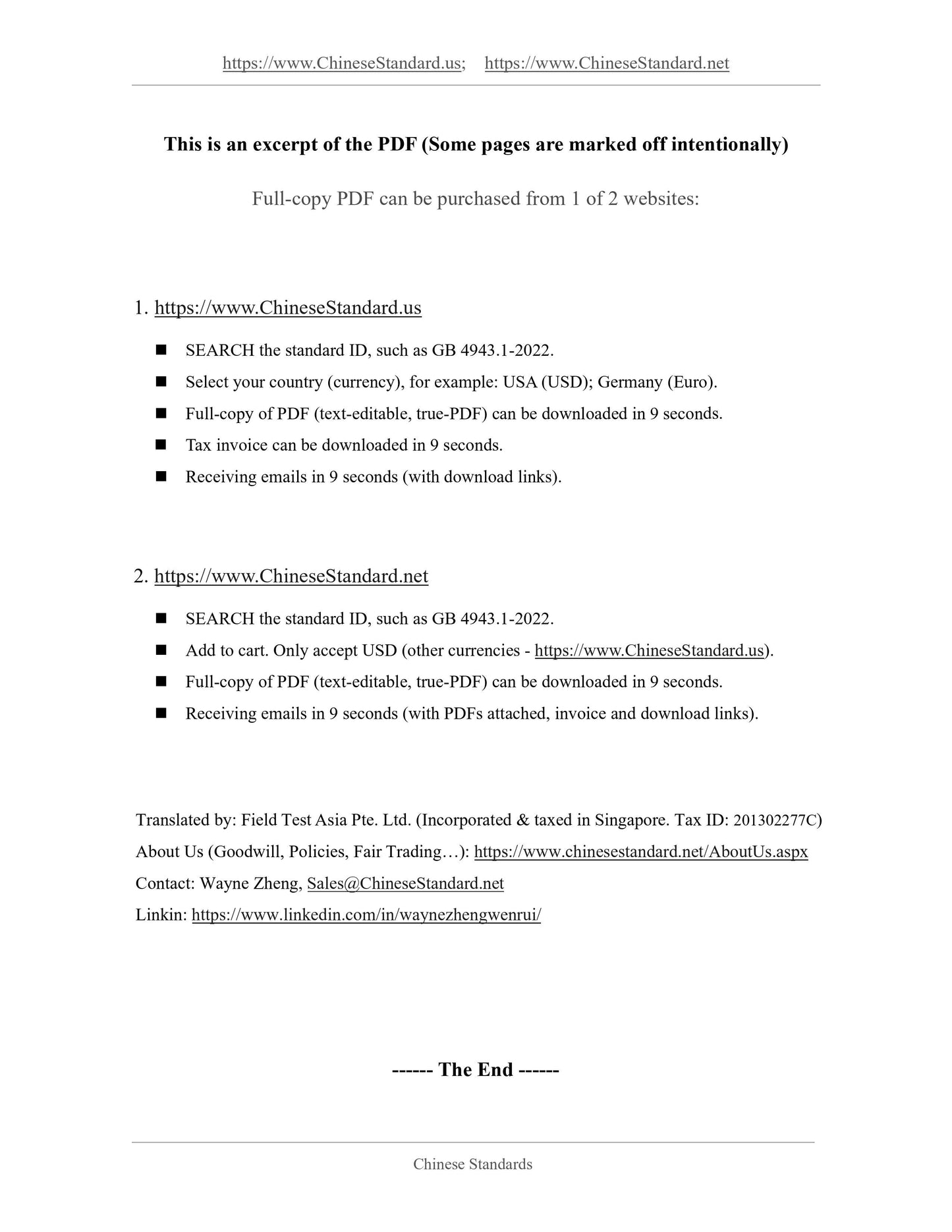1
/
of
10
www.ChineseStandard.us -- Field Test Asia Pte. Ltd.
GB 24406-2024 English PDF
GB 24406-2024 English PDF
Regular price
$290.00
Regular price
Sale price
$290.00
Unit price
/
per
Shipping calculated at checkout.
Couldn't load pickup availability
GB 24406-2024: Strength of student seat and their anchorages of special school bus
Delivery: 9 seconds. Download (and Email) true-PDF + Invoice.Get Quotation: Click GB 24406-2024 (Self-service in 1-minute)
Newer / historical versions: GB 24406-2024
Preview True-PDF
Scope
This document specifies the requirements and test methods for the strength of student seats andtheir anchorages of special school buses.
This document applies to student seats on special school buses and anchorages used to install
such seats. It also applies to restraining barriers installed in front of student seats on special
school buses.
Basic Data
| Standard ID | GB 24406-2024 (GB24406-2024) |
| Description (Translated English) | Strength of student seat and their anchorages of special school bus |
| Sector / Industry | National Standard |
| Classification of Chinese Standard | T26 |
| Classification of International Standard | 43.040.60 |
| Word Count Estimation | 18,127 |
| Date of Issue | 2024-06-25 |
| Date of Implementation | 2025-01-01 |
| Issuing agency(ies) | State Administration for Market Regulation, China National Standardization Administration |
Share
